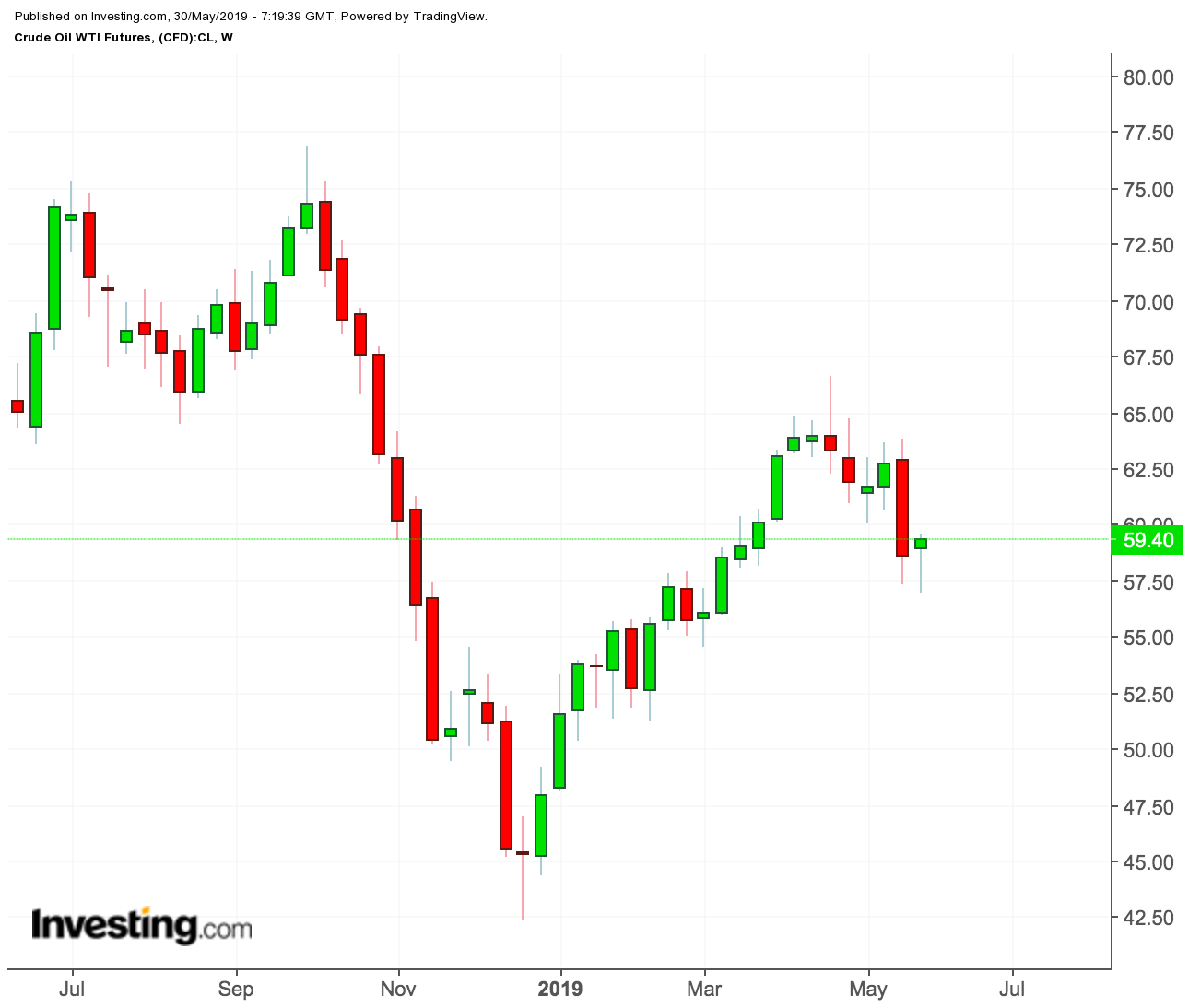3 Key Market Drivers To Watch As Oil Demand Slows But Supply Tightens
Ellen R. Wald, Ph.D | May 30, 2019 05:15AM ET
So far, 2019 has been good to oil traders, with prices rising steadily from the start of the year, to the surprise of several observers and analysts who have been predicting an impending recession for months. However, the pendulum of good news/bad news may finally be swinging more heavily to the negative side, as signs of global economic slowdown get stronger. At the same time though, tightening supply means oil investors will have to keep a close eye on developments in the major oil-producing countries, as these conflicting signals mean the surprises may very well continue.
1. Global Economic Indicators
More economic indicators are showing increased signs of a coming global economic slowdown. This is causing the oil market to stagnate or drop because traders fear that an economic slowdown will result in falling demand for crude oil and related products.
The state of the trade talks between China and the U.S. has always weighed on oil demand expectations, but some recent news has stoked greater concerns. The Wall Street Journal reported that global government bond yields reached new multiyear lows. This does not mean that a recession is definitely on the horizon, but it does indicate that investors are worried about the health of the economy.
An analyst at Morgan Stanley added accelerant to the flames when IHS Markit .
As long as the focus remains on the indicators that show slowing economic activity, oil prices are unlikely to rise.

2. Oil Supplies
At the same time as the demand outlook for oil is turning negative, oil supplies are actually tightening. The month of May revealed a significant drop-off in Iran’s oil exports. According to appears additional tankers have departed with Iranian oil, but the total amount of Iranian exports will be far below Iran’s April exports of 1 million bpd.
Production from other OPEC countries is mixed. According to Platts , Venezuela’s exports averaged 780,000 bpd in April (a very slight increase) while Angolan production is down to its lowest level since 2007. It produced only 1.41 million bpd in April.
Saudi Arabia’s April production was also down in April (only 9.82 million bpd), although Saudi Arabia increased its production in May to an expected 10 million bpd. Oil production may increase for June, but Saudi Arabia says that depends on customer demand.
Russia’s production and export situation remains compromised by contamination. The problem was supposed to be fixed by the end of April, but now the estimates are that normal oil exports may not resume until some time in June. production at its giant Kashagan field restarted on May 16.
3. Gasoline Production
American consumers are showing record levels of gasoline demand, but some U.S. refiners are having trouble keeping up. Globally, we are seeing a shortage of heavy crude oil. U.S. sanctions on Iran and Venezuela, as well as Venezuela’s economic problems, curtailed the production and exports of heavy crude from these countries.
Alternative sources of heavy crude are proving difficult to come by for some refiners. U.S. refineries in the Midwest have been getting heavy crude from Canada, but those in the Gulf region depended on Venezuela. Colombia has provided some heavy crude but prices for heavy crude have risen and margins for these refiners are shrinking.
At this point, gasoline prices are still below the five-year average but it is possible that we may see refineries running at less than full capacity this summer if they cannot secure enough heavy crude oil.
Trading in financial instruments and/or cryptocurrencies involves high risks including the risk of losing some, or all, of your investment amount, and may not be suitable for all investors. Prices of cryptocurrencies are extremely volatile and may be affected by external factors such as financial, regulatory or political events. Trading on margin increases the financial risks.
Before deciding to trade in financial instrument or cryptocurrencies you should be fully informed of the risks and costs associated with trading the financial markets, carefully consider your investment objectives, level of experience, and risk appetite, and seek professional advice where needed.
Fusion Media would like to remind you that the data contained in this website is not necessarily real-time nor accurate. The data and prices on the website are not necessarily provided by any market or exchange, but may be provided by market makers, and so prices may not be accurate and may differ from the actual price at any given market, meaning prices are indicative and not appropriate for trading purposes. Fusion Media and any provider of the data contained in this website will not accept liability for any loss or damage as a result of your trading, or your reliance on the information contained within this website.
It is prohibited to use, store, reproduce, display, modify, transmit or distribute the data contained in this website without the explicit prior written permission of Fusion Media and/or the data provider. All intellectual property rights are reserved by the providers and/or the exchange providing the data contained in this website.
Fusion Media may be compensated by the advertisers that appear on the website, based on your interaction with the advertisements or advertisers.